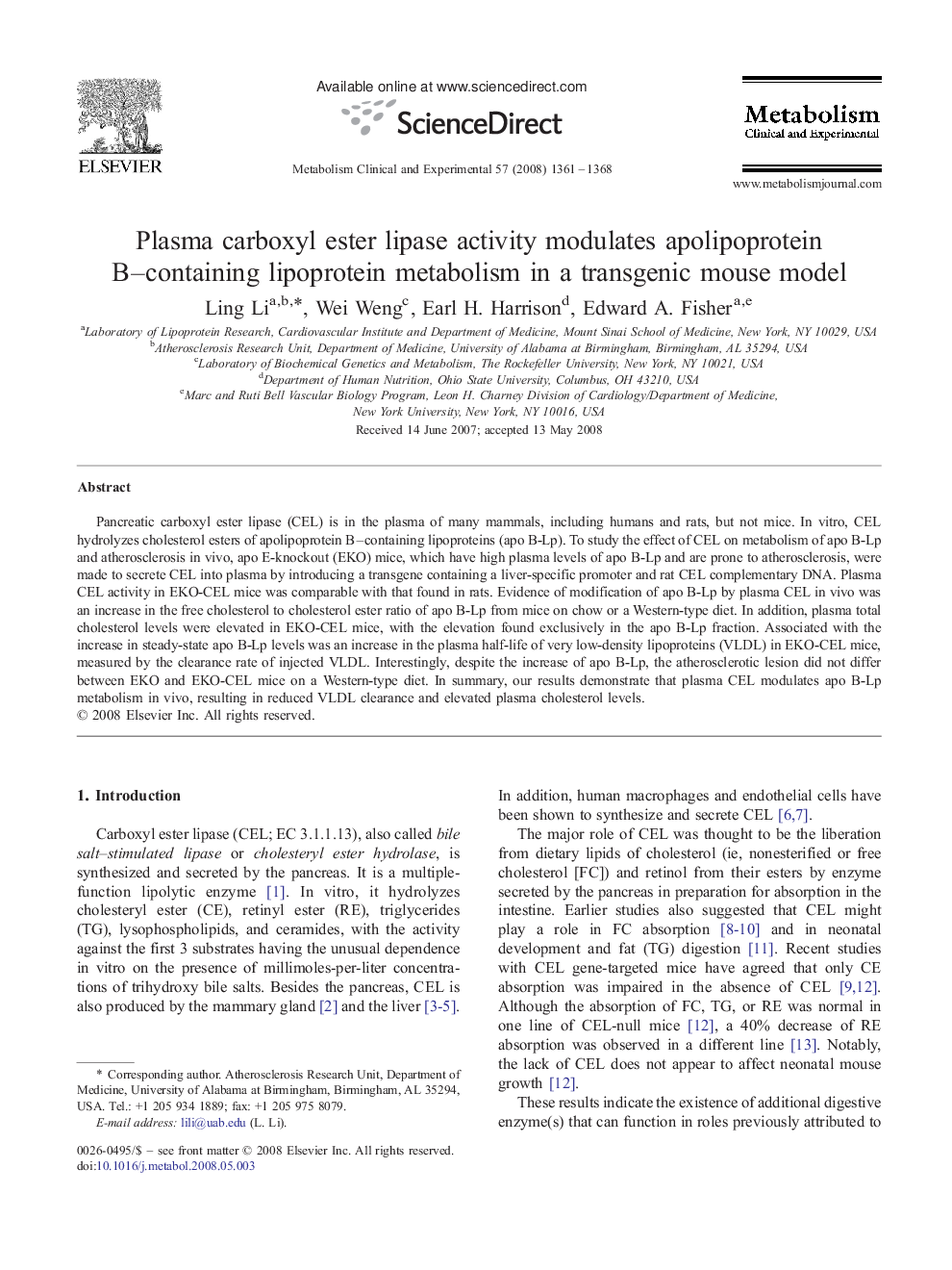| Article ID | Journal | Published Year | Pages | File Type |
|---|---|---|---|---|
| 2806182 | Metabolism | 2008 | 8 Pages |
Abstract
Pancreatic carboxyl ester lipase (CEL) is in the plasma of many mammals, including humans and rats, but not mice. In vitro, CEL hydrolyzes cholesterol esters of apolipoprotein B-containing lipoproteins (apo B-Lp). To study the effect of CEL on metabolism of apo B-Lp and atherosclerosis in vivo, apo E-knockout (EKO) mice, which have high plasma levels of apo B-Lp and are prone to atherosclerosis, were made to secrete CEL into plasma by introducing a transgene containing a liver-specific promoter and rat CEL complementary DNA. Plasma CEL activity in EKO-CEL mice was comparable with that found in rats. Evidence of modification of apo B-Lp by plasma CEL in vivo was an increase in the free cholesterol to cholesterol ester ratio of apo B-Lp from mice on chow or a Western-type diet. In addition, plasma total cholesterol levels were elevated in EKO-CEL mice, with the elevation found exclusively in the apo B-Lp fraction. Associated with the increase in steady-state apo B-Lp levels was an increase in the plasma half-life of very low-density lipoproteins (VLDL) in EKO-CEL mice, measured by the clearance rate of injected VLDL. Interestingly, despite the increase of apo B-Lp, the atherosclerotic lesion did not differ between EKO and EKO-CEL mice on a Western-type diet. In summary, our results demonstrate that plasma CEL modulates apo B-Lp metabolism in vivo, resulting in reduced VLDL clearance and elevated plasma cholesterol levels.
Related Topics
Life Sciences
Biochemistry, Genetics and Molecular Biology
Endocrinology
Authors
Ling Li, Wei Weng, Earl H. Harrison, Edward A. Fisher,
